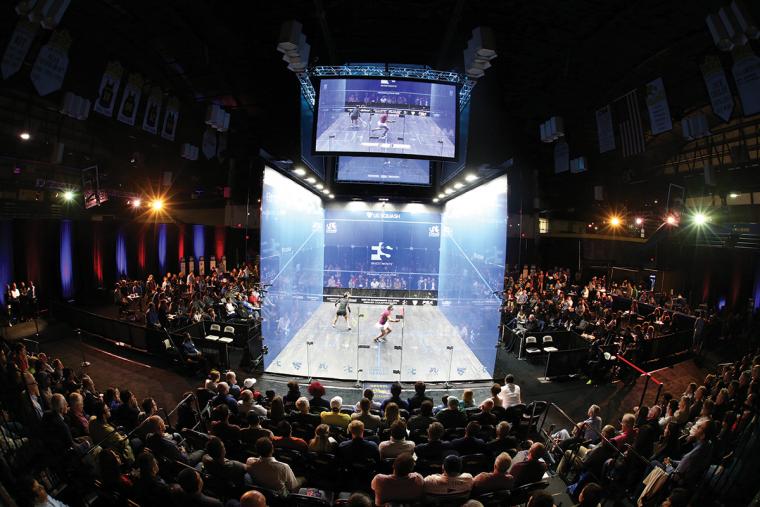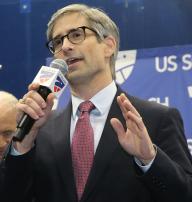

US Squash’s mission is to lead squash’s growth and development by increasing access and awareness, supporting meaningful lifelong engagement in the sport, and encouraging sportsmanship while achieving competitive excellence at the highest levels.
Sports Destination Management: Has squash been hit hard by the pandemic?
Kevin Klipstein: In some ways, it’s unclear. A lot of squash is played at the college level, so it really depends on whether a college is conducting in-person classes, and whether they are offering sports. It’s also played in athletic clubs, which were closed for some time but are opening up again in many states. I think we’re doing okay, all things considered. We’re currently in the midst of construction on a $35 million-plus national center so that adds a layer of complexity.
SDM: Could you share some details about the project?
Klipstein: It is a 75,000-square-foot construction project and it is going to be on the campus of Drexel University in Philadelphia. There will be room for 20 courts including two all-glass exhibition courts, our Hall of Fame and all the facilities our athletes need to train. We will be able to operate everything from a community center to squash programming as a commercial club might do; we’ll also host some community education programs for the underserved.
SDM: How did you decide upon that location?
Klipstein: We had been considering a center for a few decades and we started partnering a few years ago with Drexel to host the US Open so it really made sense to put our headquarters there. We got lucky in that there was a large, empty armory building that was owned by the Commonwealth of Pennsylvania, so we worked with them to take over the lease. It really is an ideal location for us because our core population is in the corridor between Boston and Washington, DC. There is an international airport, and Philadelphia is a good city for people who want to explore.
SDM: How many courts will there be in the area, once the facility is built?
Klipstein: There are already seven courts at Drexel and another 12 at the University of Pennsylvania, so when you add that to the ones we’ll have at the national center, there will be 40 courts, which is the highest concentration of courts anywhere in the world. For a small sport like ours to be able to do this is incredible.
SDM: How many championships do you put on in a typical year?
Klipstein: We put on about 20 national events. We also have regional events, or as we call them, district-level. On the junior side, there are about eight regional events.
SDM: Is there a demand for courts?
Klipstein: Current facilities are being used more often, according to our research, and we know that Lifetime Fitness will be adding squash courts in certain areas. We actually offer a grant program for clubs that want to convert courts from racquetball to squash. We are also working to promote a system we have developed for court reservations that could be used across all clubs with squash courts – it is basically like Open Table, except it reserves game times for squash. At the end of the day, you need a place to play. We want to make that possible.
SDM: US Squash has been active for a long time with the National Urban Squash and Education Alliance (NUSEA) – will the new headquarters host those programs as well?
Klipstein: Yes – definitely. NUSEA runs 20 programs for underserved youth. It’s a really comprehensive program. In addition to squash instruction – we look at participating in a sport as being really important in terms of character development – the program includes tutoring and mentoring, and helping kids get all the way into and through high school, and into and through either a four-year college or a technical school. We also help them source scholarships so that they can afford to keep going with their education. The program has a really good record of success, so we’ll keep moving forward with that. SDM

